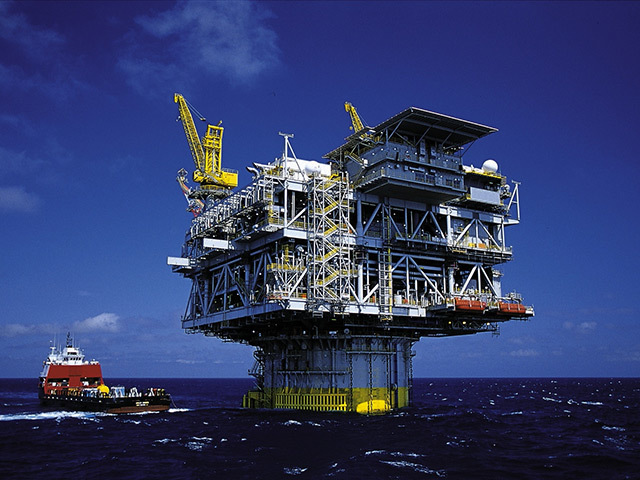
Financial results from a fourth quarter that saw the collapse of the crude market will provide a window into how the world’s biggest oil companies are adjusting to a new reality of slowing growth and low prices.
Oil that topped $115 a barrel as recently as June has been trading below $50 a barrel since the first week of the year, portending a bleak 2015 for the world’s five so-called supermajors — Exxon Mobil Corp., Royal Dutch Shell Plc, Chevron Corp., Total SA and BP Plc.
The companies, whose businesses combine oil and natural gas exploration with refining and chemical manufacturing, have historically been among the most resilient players during down cycles.
This could be the oil bust that breaks that pattern.
“The issue for this group of companies is they don’t have bulletproof business models,” said Brian Hennessey, who helps manage $1.4 billion at Alpine Woods Capital Investors LLC in Purchase, New York.
A 57% plunge in the price of oil since June “really tests your convictions.”
The industry’s stark change in fortune set off panic from corporate board rooms to drill-rig floors as companies that pump almost one-tenth of the world’s crude scramble to tighten budgets and preserve cash for dividends, buybacks and capital projects too far along to abandon.
BP froze wages, Chevron delayed its 2015 drilling budget and Shell canceled a $6.5 billion Persian Gulf investment; layoffs industrywide have topped 30,000, enough to fill almost every seat in Madison Square Garden twice.
Investors will be sifting the data from the fourth quarter for clues to how long the current slump will last.
Momentum from $109 a barrel oil during the first half of the year helped carry producers through the last three months, when the price of Brent, the benchmark used by most of the world, averaged $77.07 — well above the current price of $49.
The effects of lower prices will still take their toll as all except Shell are forecast to report earnings declines compared with the fourth quarter of 2013.
Shell profits are expected to rise compared with unusually ugly results the year before.
Worldwide crude supplies appear likely to exceed demand for the rest of the year and beyond, even as the lowest oil prices since 2009 discourage new developments in high-cost regions such as
Canada’s oil sands, said Paul Sankey, an analyst at Wolfe Research in New York.
That would postpone any rebound in share prices of the five biggest oil majors, which have tumbled by an average of 8.1% since crude prices began to slide in June.
That compares with a 28% decline in a Standard & Poors index of 18 smaller US oil and gas producers.
“Buying oil equities here would be dangerous,” Sankey said in a January 27 note to clients. “Our research suggests that the consensus view that oil markets will recover by the second half of 2015 may well be optimistic.”
The price collapse hobbles a segment of the industry that had already been struggling with years of soaring construction costs, project delays, missed output targets and depressed returns from refining crude into fuels, said Anish Kapadia, an analyst at Tudor Pickering Holt & Co. Aside from steady dividend payouts, the biggest oil companies offer no compelling reason to invest, he said.
“We see little to differentiate between the supermajors as no-growth yield plays,” Kapadia said in a note to clients.
Shell kicks off the earnings season for the biggest oil companies on January 29.
The Hague-based company is expected to report profit, excluding special items and inventory changes, of $4.18 billion, based on the average of seven estimates from analysts in a survey.
That would represent a 44% increase from a year earlier, when faltering production from wells and escalating costs trimmed earnings to a four-year low.
Chevron on January 30 is expected to post fourth-quarter net income, excluding one-time gains and losses, of $3.17 billion, based on the average of nine analysts’ estimates.
That would be a 36% year-over-year decline.
Exxon is next up when it reports results on February 2.
The Irving, Texas-based producer probably reaped $5.85 billion in net income, excluding one-time items, according to the average of 11 estimates from analysts.
That would represent a 30% decline from a year earlier.
BP is expected to report profit of $1.98 billion, excluding one-time items and inventory changes, when it posts results on February 3.
That would compare with $2.81 billion during the final three months of 2013.
Total will round out the season on February 12, when the French oil giant is expected to report an 11% decline in fourth-quarter net income to 2.19 billion euros ($2.49 billion).
As cash flows shrink this year, dividend protection will take precedence over finding new oil fields or repurchasing shares.
The supermajors are exquisitely sensitive to price fluctuations; for example, every $10 decline in the oil price slashes $2.84 billion from Exxon’s annual cash flow, according to Barclays Plc.
For Chevron, which is more dependent on crude than its larger U.S. rival, the cut is $3.85 billion.
The supermajors “are going to hunker down to protect the dividend,” Iain Reid, an analyst at BMO Capital Markets, said in a telephone interview. “The dividend will stay safe for two years.”
For other market info stories click here.
Recommended for you
